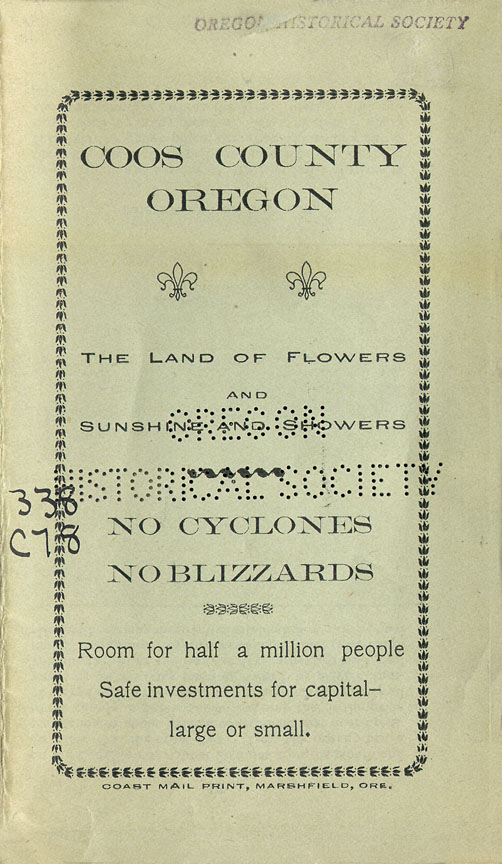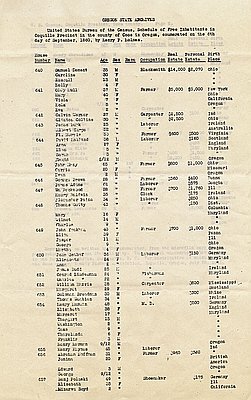In the first decade of the twentieth century, Coos County politicians and merchants worked to attract people and capital investments to establish banks, railroads, and manufacturing plants. Boosters wanted to guarantee economic growth, and promotional materials advertised the county’s deep harbors, mild weather, rich forests, and varied mineral deposits.
Speculators representing eastern and Midwestern investors purchased much of Oregon’s available forested lands around the turn of the century, when timber prices were high. Three large Great Lakes-based lumber companies who had already exhausted eastern forests—the C.A. Smith Lumber Company, the Weyerhaeuser Timber Company, and the Menasha Wooden Ware Company—bought most of the land in Coos County.
In Coos County, the logging industry boomed between 1900 and 1910. Laborers from around the nation, including a large population of Scandinavian immigrants, traveled to Coos Bay to work in logging camps and mills. In 1900, Coos County had 10,324 residents. By 1920, the population of Coos County, at 22,257, had surpassed many other coastal counties.
After 1910, the Pacific Northwest logging industry fell into a boom-bust cycle caused by rapid changes in the market and overproduction. In response, companies often slowed or stopped production and workers were not certain when they would have work. Timber harvesting in Coos County increased after WWII. By the 1980s, dwindling resources caused mill closures, job losses, and an economic depression.
Further Reading:
Robbins, William G. Hard Times in Paradise: Coos Bay, Oregon, 1850-1986. Seattle, Wash., 1988.
Written by Kathey Tucker, © Oregon Historical Society, 2002.

